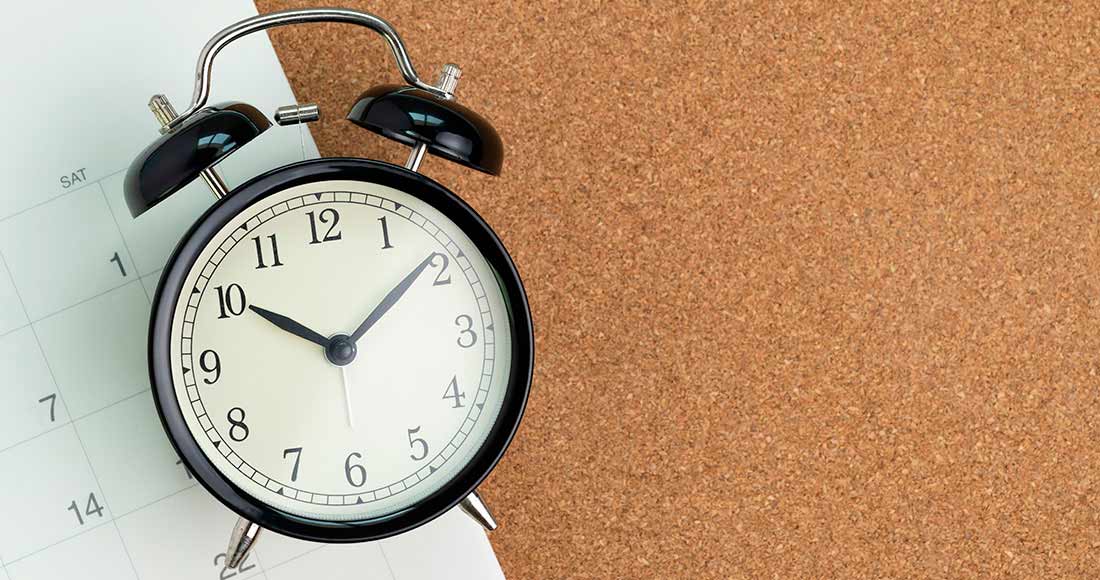How to make a proper daily routine

Time is a strategically important resource that influences the life of any adult. Many successful businessmen, politicians, and artists claim that it was a clear daily schedule that helped them achieve their goals. Discipline and well-designed daily schedule helps to trace on what cases precious time is spent. Following a plan and schedule can improve self-discipline, make life more organized, improve the quality of work and rest. Today we are going to discuss how you can create a schedule for your day and learn to follow its rules.
What it is and how it helps in life
All living things are rhythmic. We sleep at night, in the dark, and wake up at sunrise. Therefore, keeping a routine is a natural need of our body.
A daily regimen is a list of activities to be performed in a certain order. Its purpose is to improve the quality of life through the formation of a healthy lifestyle, healthy habits, competent organization of personal and working time. It includes the following distribution by sections:
- Waking and sleeping times.
- Meal Breaks.
- Periods to be active.
- Time for favorite activities, hobbies.
A rational daily routine is necessary for a normal rhythm of life, optimizing time, eliminating chaos from life, getting rid of hurry, eliminating the feeling of helplessness due to the fact that it is not possible to complete important tasks by a certain deadline. It helps to correctly determine the importance of current priorities and allocate time. Once you learn to stick to a schedule and plan daily activities, it is easier to move on to long-term plans. An example of other benefits of following a daily schedule:
- Ensuring adequate rest, improving the quality of sleep;
- Restore immunity by following the individual biorhythms of the body;
- Stabilization of the nervous system;
- Increased physical activity;
- Normal weight, improving the functioning of all organs of the body;
- Making time for personal matters and socializing with loved ones.
Systematic observance of daily rituals allows to make the course of life measured and calm. It positively affects the emotional and physical health of a person, success and productivity in work. The biographies of many famous people who actively used daily planning in work and personal life are a sample of confirmation of this statement.
Benjamin Franklin, scientist, diplomat, famous politician, one of the founders of modern time management system, was one of the clear followers of the daily regimen. Working to improve his personality, inculcating useful habits, Franklin developed a whole set of moral principles, which became known as “Franklin’s 13 virtues”.
The list mentioned such concepts and positive qualities: thrift, silence, calmness, moral purity, moderation, determination, labor, strict adherence to order, and other principles. Benjamin allotted one week to achieve each useful skill. His achievements were tracked on a special weekly chart. In addition, Franklin developed for himself an ideal daily schedule, distributing in it the time for sleep, work, walks and meals.
How to combine your biorhythms and habits with adherence to your daily regimen

To organize an optimal daily routine, it is important to know and take into account the physiological characteristics of an adult. If you are used to going to bed late and rising after 11.00 am, it means that if you set your alarm clock for 6.00 am, you are likely to feel broken and tired. It is unlikely that you will be able to achieve any productivity in such a state.
According to the periods of activity, people are divided into two main types: owls and larks. The peak of efficiency of the first falls in the evening, and the second, on the contrary, are capable of active actions until noon, and closer to the evening become inert and passive. This variant of division cannot be called accurate. After all, for example, in most African countries, the entire population lives in approximately the same mode. This is due to the lack of electrification in most settlements in this region. Therefore, life in them stops at nightfall, and with the first rays of the sun it is activated again.
It has been proven through repeated experience that anyone can adjust and change his or her sleep pattern without any health consequences. All it takes is willpower and strict adherence to the rules of the new routine.
Businessmen, politicians, creative people who spend most of their lives traveling, often have to adjust their internal biorhythms to the changed conditions due to the change of time zones. The following tips will help you reorganize your regime with minimal damage to your body:
- When choosing days to travel or fly, be sure to plan for rest after arriving in a new place.
- Do not overload your body with heavy food and alcohol before traveling. It is also advisable to avoid cigarettes.
- Take into account that the body better tolerates east-west flights in the first half of the day and west-east flights in the evening.
- A few days before your flight, try to get your normal routine as close as possible to the new time in which you will have to live and work.
The human body is capable of independently changing the daily routine and adapting to changing conditions. For example, the beginning of classes in secondary education institutions is usually 8.30-9.00 am. Therefore, children get used to getting up early and are more active in the first half of the day. But, with enrollment in higher education institutions, where weekday classes are often held in the evening, students quickly get used to the new schedule
What the average person’s biological clock looks like

At different times we are most active or calm. Knowing your biological clock will help you plan your weekday. Conditionally, the mode can be divided into the following segments on an hourly daily schedule:
- From 4:00 to 5:00 in the morning there is an active production of cortisol, which stimulates brain activity. Some people wake up easily during this period thanks to its action.
- From 05:00 to 06:00 the body awakens. The main systems are activated with increased production of sugars and amino acids, which give energy to the body.
- From 07:00 to 09:00 is the best time for breakfast, active sports.
- From 09:00 to 10:00, having been energized by food and activity, the body adjusts to mental work. This time is suitable for performing processes related to concentration.
- From 10:00 to 12:00 we experience peak mental activity and productivity. We accomplish complex tasks quickly and intelligently.
- From 12:00 to 2:00 p.m., performance deteriorates. It is best to schedule lunch for this time period.
- From 2:00 to 4:00 p.m., it is advisable to switch to secondary tasks.
- From 4:00 to 6:00 p.m., our mental faculties are on the upswing again. We can get back to work in an active mode.
- From 6:00 p.m. to 8:00 p.m. is the time for the evening meal.
- From 8:00 pm to 9:00 p.m., you can plan a light home vacation, a walk, a workout, or a nice socializing with friends.
- From 9:00 to 10:00 p.m. – preparation for sleep.
- From 10:00 p.m., the resting phase begins with the production of growth hormone, which promotes cellular repair in the body.
- From 11:00 p.m. to 01:00, the deep sleep phase continues.
- From 02:00 to 03:00 a.m. the intensity of all life processes slows down to the maximum. If you miss this period of sleep, it will cause irritability and severe fatigue.
During the cold season, when daylight hours are shorter, activity periods are shifted forward a bit. You can use the description of this example to build your productive daily routine.
How to make a daily routine
We have seen that it is important to keep a work and rest schedule. Now let’s discuss how to make your day regimen, which will help you become more productive.
Step 1: Make a list of all the things you need to accomplish
At this stage, do not think about how the regime should be organized or the order in which tasks should be performed. It’s not a done deal yet. Just write down everything that comes to mind. It’s important to write down absolutely everything to do, big and small, as well as those that you don’t do but would like to. You will always have time to delete the unnecessary.
It can be difficult to create a ready-made list in one sitting. Not all tasks come to mind at once, and some are only remembered when it’s time to do them. It is more convenient to enter tasks into the task planner on your phone, or the old-fashioned way in a notebook during the day. If you are closer to the second option, you can download and use ready-made templates.
Step 2: Ask yourself clarifying questions
What do I need to do to learn English? What do I need to do to get in shape? What do you need to do in the morning before work? In the process, you will come to realize that you need to accomplish many small tasks to achieve your goals. They are also worth scheduling. To do this, you can divide tasks into subtasks or add checklists in LeaderTask.
Use colors to highlight tasks that relate to different areas of your life. For example, blue for household tasks, red for work, green for health, etc. If you don’t like the idea of colors, you can use labels. It is important to maintain balance and pump up all aspects of life. Only then can you become truly happy. The balance wheel helps with this.
Step 3: Tie tasks to a specific time frame
Some things are more time-sensitive than others. Start planning your day with this category of tasks. Don’t forget to allow time for small breaks.
To optimize your daily routine, listen to your internal biological clock. Assess whether you are more active and productive in the morning, afternoon or evening. Based on these observations, organize your daily schedule by time.
Step 4: Once again, go through the prepared list carefully
If you realize that there is no time left in your daily schedule for personal tasks, review your task list. There are bound to be things that you can painlessly give up.
Conclusion
To turn your daily routine from a paper or electronic list into a direct guide to action, you need to follow a few simple rules:
- Go to bed and wake up at approximately the same time, allocating at least 7-8 hours for a night’s rest. The quality and duration of sleep determines the activity, efficiency and health of any person.
- Plan meals for the same time.
- Plan important things to do for your periods of biological activity.
By following these simple conditions, it will be easier for you to get used to any daily regimen. Plan it based on your physiological capabilities, work, habits and desires. Once you learn to live by a clear schedule, you will notice that you will have much more free time. You will be able to allocate it for communication with your loved ones or personal affairs without compromising your career. By following a regimen, you will not only improve your productivity, but also bring real benefits to your health, preserving it for years to come.



